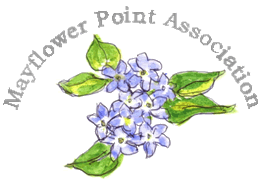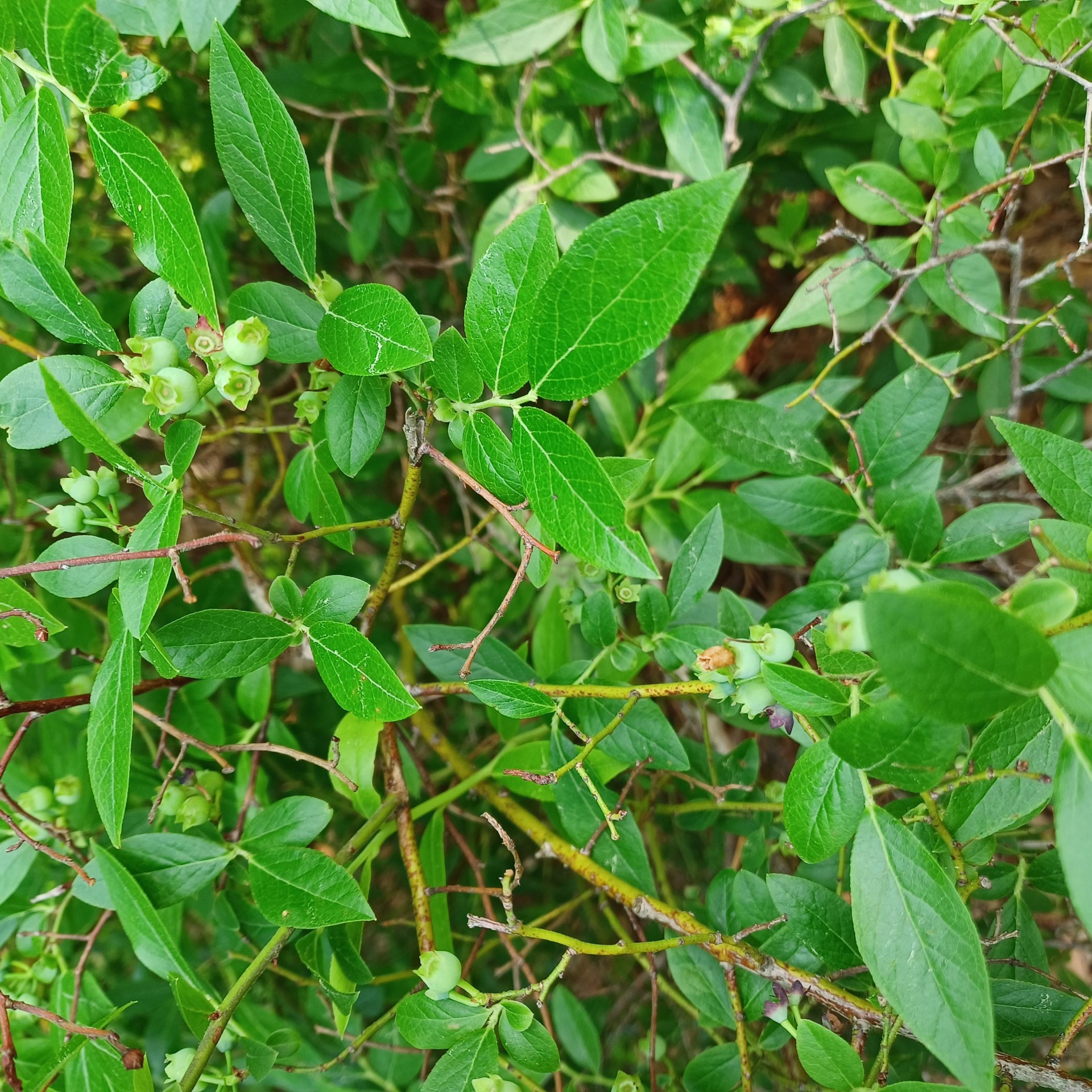More Native Shrubs (from our archive)
July 2024: Lowbush blueberry, Vaccinium angustifolium.
 Lowbush blueberry is a hardworking little shrub—just six inches to two feet high—that delights a host of creatures, including humans.
Lowbush blueberry is a hardworking little shrub—just six inches to two feet high—that delights a host of creatures, including humans.
It prefers chilly climates. Its US range includes all of New England and extends west as far as Minnesota. South of the Mason-Dixon line, however, it is generally only found in the wild in Maryland and in the mountains of Virginia and West Virginia.
Within this range, lowbush blueberry thrives on sandy or rocky balds and in open woodlands dominated by pines or other conifers. On and around Mayflower Point, it luxuriates in areas with dappled sunshine and pine needle beds, where it can form large colonies.
 These colonies provide a lush ground cover of glossy foliage in spring and summer that turns vibrant shades of red and maroon in the fall. The pink-tinged white blossoms in spring and the berries in summer provide further visual interest.
These colonies provide a lush ground cover of glossy foliage in spring and summer that turns vibrant shades of red and maroon in the fall. The pink-tinged white blossoms in spring and the berries in summer provide further visual interest.
Lowbush blueberry provides important sustenance to native bumblebees, who feed on the nectar in its blossoms, and to the caterpillars of several moth and butterfly species, who nibble its leaves. The Native Plant Trust classifies the shrub as a “pollinator powerhouse plant.”
We humans must stoop to pick the small sweet berries. If we tire of this labor, however, the birds will be happy to eat the berries we leave behind, as will chipmunks, squirrels, foxes and raccoons.
June 2024: Mountain laurel, Kalmia latifolia.
 Mountain laurel, the state flower of Connecticut and Pennsylvania, can be found all along the eastern US from Maine south to Florida and as far west as Indiana and Louisiana. In the southern part of its range, this broad-leaved evergreen shrub prefers north-facing slopes and higher elevations. On Cape Cod, it is happiest in humus-y soil in open woodlands and other locations that are shielded from the hottest rays of the afternoon sun. It can handle sunnier spots provided the soil remains somewhat moist and cool.
Mountain laurel, the state flower of Connecticut and Pennsylvania, can be found all along the eastern US from Maine south to Florida and as far west as Indiana and Louisiana. In the southern part of its range, this broad-leaved evergreen shrub prefers north-facing slopes and higher elevations. On Cape Cod, it is happiest in humus-y soil in open woodlands and other locations that are shielded from the hottest rays of the afternoon sun. It can handle sunnier spots provided the soil remains somewhat moist and cool.
Typically, the straight species is a multi-stemmed shrub that reaches four to 10 feet in height, but it can also develop into a small single-trunked tree and grow several feet taller. Almost every plant database describing mountain laurel mentions its “gnarly” branches and peeling bark, which can give it a wild and even scruffy appearance before it bursts into bloom in late spring in a stunning transformation. As if touched by a fairy godmother’s wand, mountain laurel becomes a cloud of white to pale pink blossoms that attract bees and butterflies. Some cultivars flower in deeper shades of pink.
The blossoms eventually mature into seedpods that also provide visual interest, and the leathery leaves are attractive year-round. Gardeners should be aware that mountain laurel leaves, flowers and stems are highly poisonous to humans and other mammals, but this attribute also discourages deer from browsing on them.
January 2024: Inkberry, Ilex glabra.
For a positive resolution for the new year, consider adding inkberry to your garden.
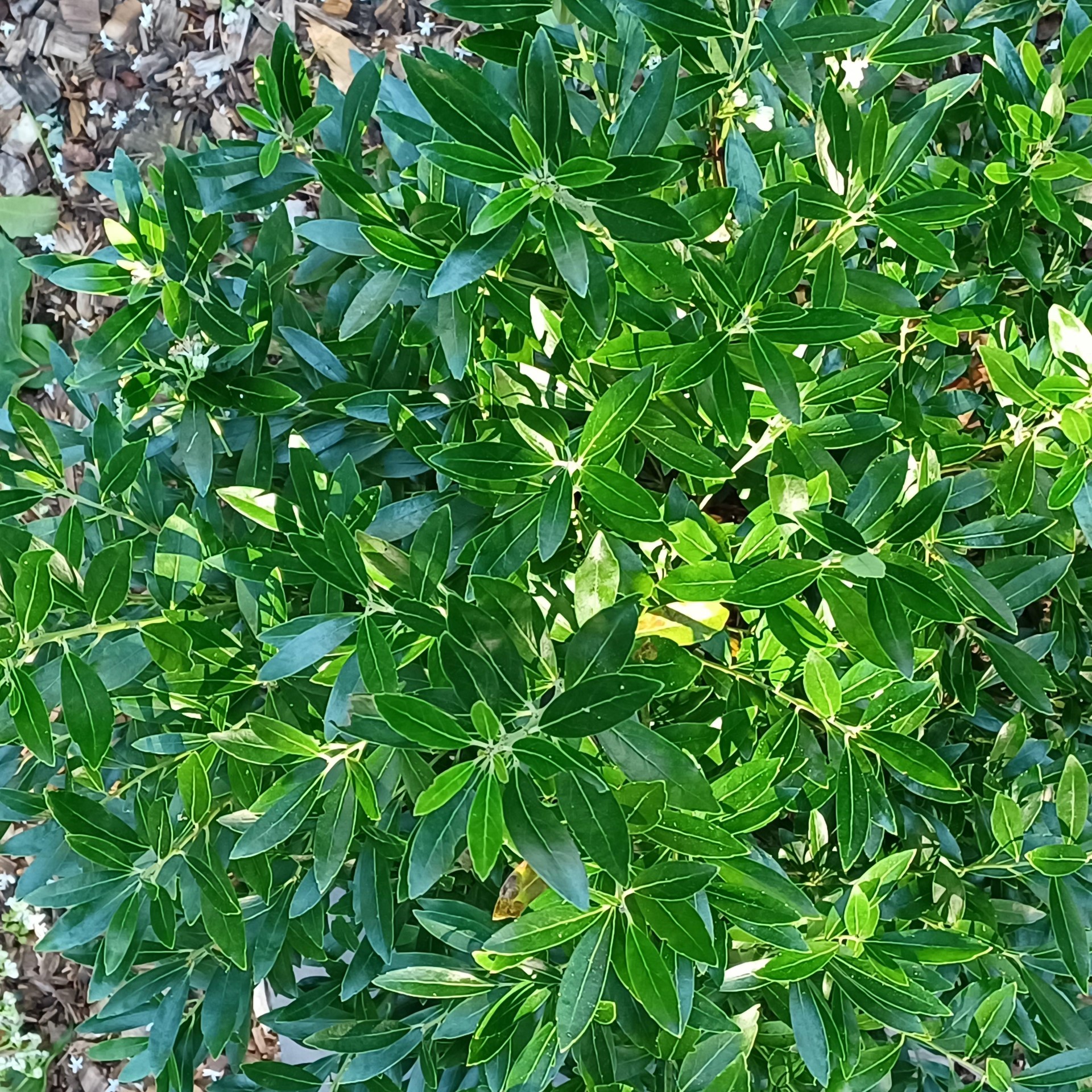 Inkberry’s evergreen leaves and relatively compact form make it an excellent substitute for boxwood and Japanese holly. Compared with these non-native shrubs, the leaves of this native holly are slightly longer and shinier, and the overall plant has a fresher and more winsome appearance. As William Cullina writes in Native Trees, Shrubs and Vines, inkberry “has a certain billowy, mounded character that is wild yet formal at the same time.”
Inkberry’s evergreen leaves and relatively compact form make it an excellent substitute for boxwood and Japanese holly. Compared with these non-native shrubs, the leaves of this native holly are slightly longer and shinier, and the overall plant has a fresher and more winsome appearance. As William Cullina writes in Native Trees, Shrubs and Vines, inkberry “has a certain billowy, mounded character that is wild yet formal at the same time.”
The straight species, Ilex glabra, can grow up to eight feet tall, but cultivars such as “Compacta” and “Shamrock” will top out at five feet.
Moreover, inkberries are not difficult. They prefer full or part sun but can handle shade. They like moist soil and therefore supplemental watering during droughts. Even so, the Native Plant Trust says they are drought tolerant.
 In the wild, the Missouri Botanical Garden database notes, inkberry “is most commonly found in sandy woods and peripheries of swamps and bogs” along the coastal plain from Nova Scotia to Florida and the Gulf Coast west to Louisiana. Here on Mayflower Point, we've got the "coastal" and "sandy woods" requirements covered.
In the wild, the Missouri Botanical Garden database notes, inkberry “is most commonly found in sandy woods and peripheries of swamps and bogs” along the coastal plain from Nova Scotia to Florida and the Gulf Coast west to Louisiana. Here on Mayflower Point, we've got the "coastal" and "sandy woods" requirements covered.
November 2023: Northern bayberry, Morella (or Myrica) pensylvanica.
 Northern bayberry, like many shrubs native to Cape Cod, is scrappy and resilient.
Bayberry not only tolerates “poor soils, wet soils, drought, high winds
and salt spray,” says the Missouri Botanical Garden database, but it
also has no serious insect or disease issues.
Northern bayberry, like many shrubs native to Cape Cod, is scrappy and resilient.
Bayberry not only tolerates “poor soils, wet soils, drought, high winds
and salt spray,” says the Missouri Botanical Garden database, but it
also has no serious insect or disease issues.
It thrives in sandy soils because it fixes its own nitrogen through a symbiotic relationship with the Frankii bacteria that typically invade its root nodules.
When left to its own devices in conditions it likes, bayberry can grow up to 10 feet tall and slowly expand by suckers to form colonies.
By May, Northern bayberry sports fresh green leaves that grow leathery in texture as the season progresses. It is not evergreen, but it holds onto its leaves into early winter. It also hybridizes easily with its more southern version, Morella caroliniensis, which is evergreen.
Bayberry’s resinous aroma is familiar to any of us who have sniffed a few of its crushed leaves.
 The
silvery berries that appear in the fall on the female plants—if a male
plant is nearby—provide that same scent and the high-quality wax for the
bayberry candles that grace New England holiday tables.
The
silvery berries that appear in the fall on the female plants—if a male
plant is nearby—provide that same scent and the high-quality wax for the
bayberry candles that grace New England holiday tables.
August 2023: Summersweet, Clethra alnifolia.
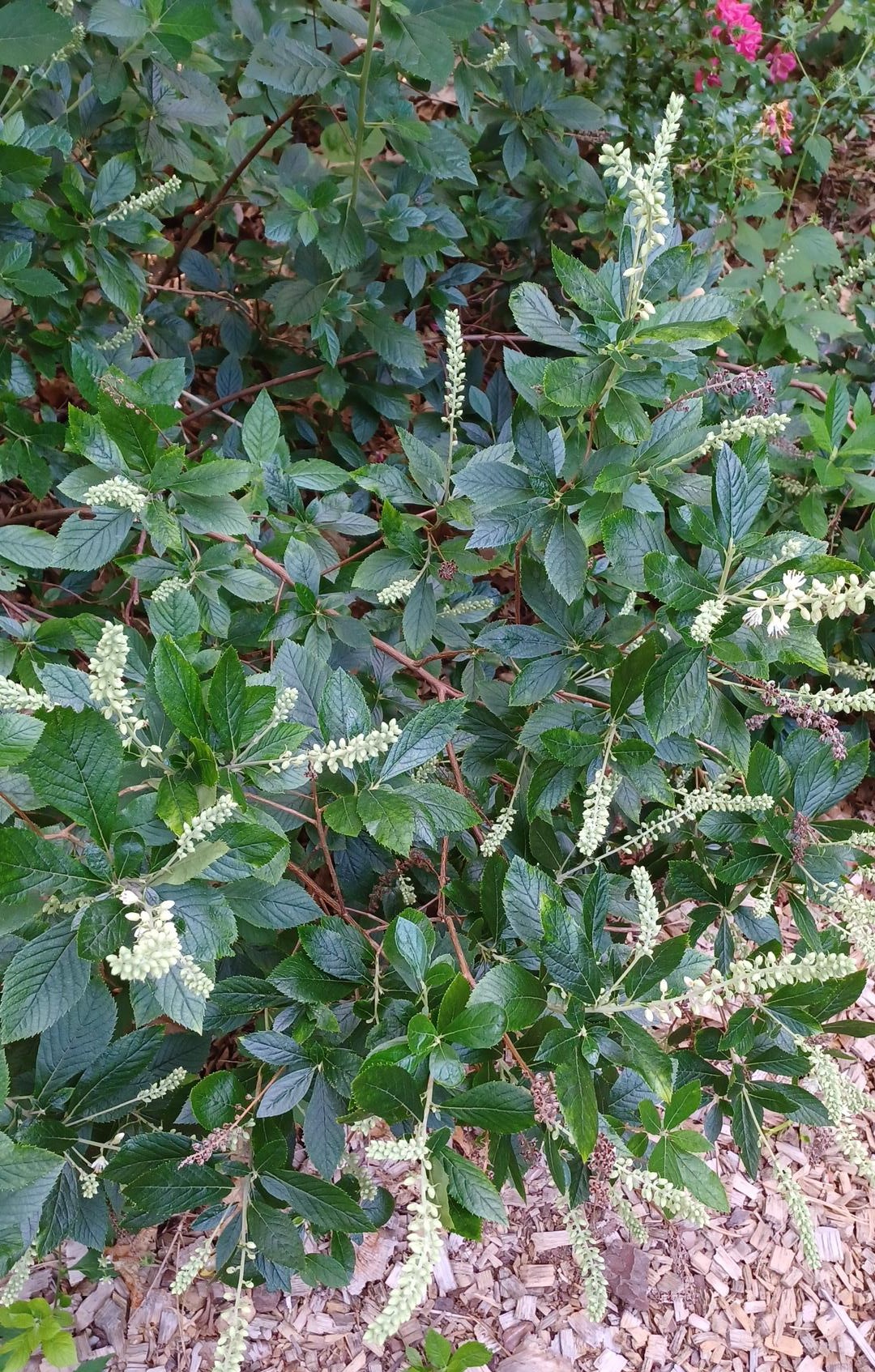 In August, the crowds on Cape Cod start to thin, and there’s often a crisp note in the air after the humidity of July.
It’s time to take a deep breath, and revel in the fragrance of
summersweet, the shrubs with the white bottlebrush flowers reaching peak
bloom.
In August, the crowds on Cape Cod start to thin, and there’s often a crisp note in the air after the humidity of July.
It’s time to take a deep breath, and revel in the fragrance of
summersweet, the shrubs with the white bottlebrush flowers reaching peak
bloom.
Summersweet is native to coastal regions from Maine to Florida and west to Texas. It likes the filtered sunlight of open woods, as well as sunnier sites near lakes or bogs where the soil retains some moisture. It can also tolerate heavy shade and still produce some flowers. You’ll find it, both cultivated and wild, in Mayflower Point. You can also enjoy its aroma by the ponds of Nickerson State Park and along the Cape Cod Rail Trail heading west from downtown Orleans.
According to the Native Plant Trust, “Before the proliferation of lighthouses, many sailors knew this plant as ‘sailors' delight’: when the winds were right, they could often smell Clethra in bloom before they saw land.” Bees, butterflies and hummingbirds are attracted to the flowers as well. In fall its foliage turns shades of gold and the flowers ripen to seedpods that various birds and mammals eat.
July 2023: Black huckleberry, Gaylusaccia baccata.
|
This month, in your walks around Mayflower Point, you may notice stands of shrubs, about hip-high, bearing navy blue, almost black berries that resemble wild blueberries. While we do have lowbush blueberry here (about ankle-height) and highbush blueberry (shoulder height and higher), the huckleberry bush grows to an ergonomic height for picking—which is good because it takes rather a long time to pick enough of its small berries for a dessert. Still, if you can be patient enough to pick a pint to augment the blueberries you’re assembling for a pie, you’ll be rewarded with intense flavor. Huckleberry is visually appealing, too, with shiny green leaves in spring and summer that turn red in the fall. |
|
|
Huckleberry can be found throughout New England and west to the Great Lakes and south to Alabama and Georgia. It likes acidic, well-drained soils in sun or part shade, the filtered sunlight of open woods in particular. It grows in thickets, with new stems emerging each season from the outskirts of the colony. Wherever huckleberry grows, wildlife appreciates it. Numerous birds and mammals feed on its berries, and several species of butterflies, including the endangered Karner Blue, seek the nectar of its blossoms. |
|
June 2023: Rosebay rhododendron, Rhododendron maximum.
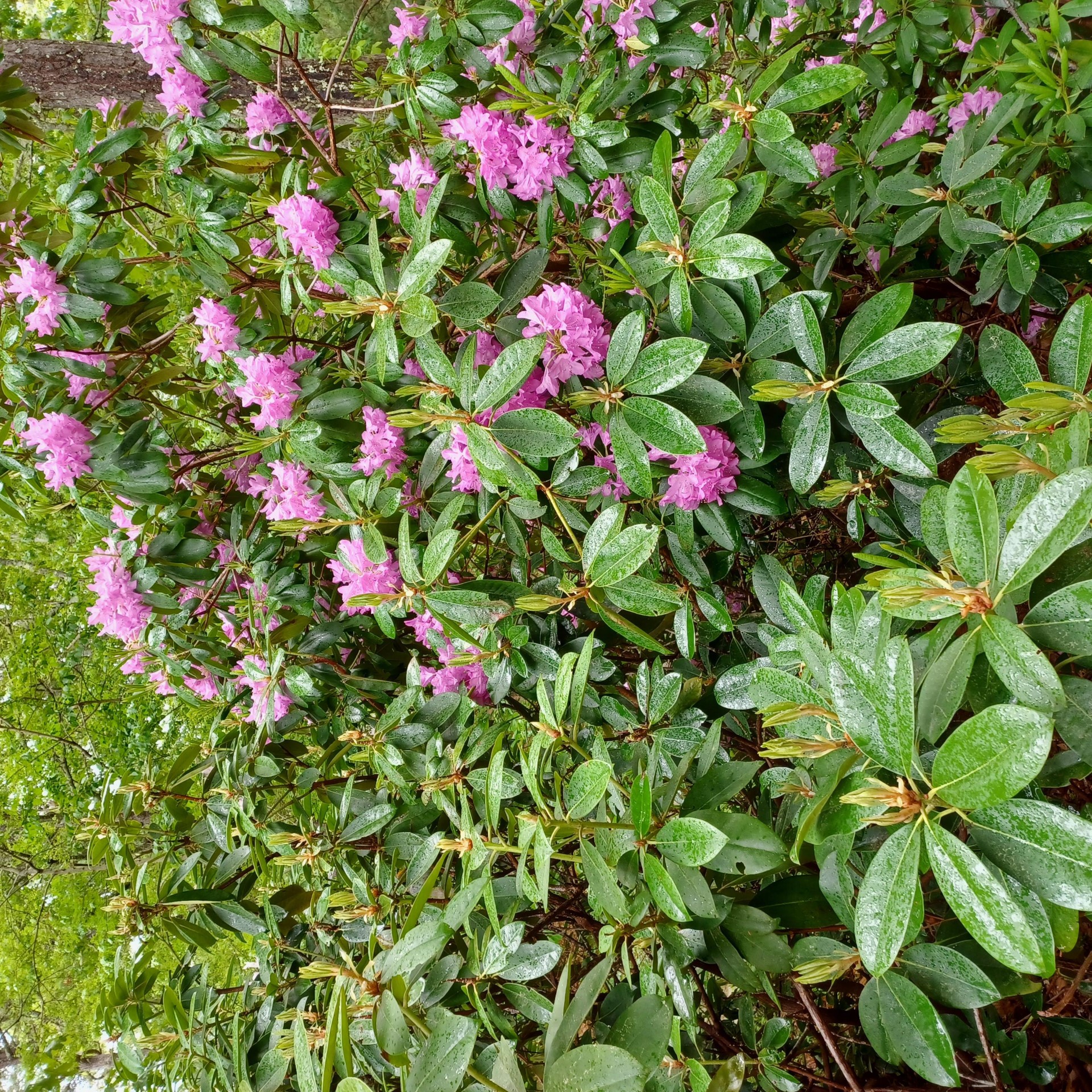 This
evergreen shrub, also known as great laurel, packs a bold ornamental
punch, as its Latin name implies. Its height typically ranges between
five and 15 feet but can reach 30 feet when its optimum
conditions—moist, acidic, humusy, well-drained soils in part shade—are
met. Judging by the size that many rosebay rhododendrons attain on
Mayflower Point, the conditions here suit them.
This
evergreen shrub, also known as great laurel, packs a bold ornamental
punch, as its Latin name implies. Its height typically ranges between
five and 15 feet but can reach 30 feet when its optimum
conditions—moist, acidic, humusy, well-drained soils in part shade—are
met. Judging by the size that many rosebay rhododendrons attain on
Mayflower Point, the conditions here suit them.
The dramatic blossoms, which began appearing last month on the Cape, can be white, pink or deep rose-red. “Maximum” also describes its leaves, which are the largest of all native rhododendrons, according to the Lady Bird Johnson Wildflower Center.
Rosebay rhododendron’s range stretches from Nova Scotia to northern Alabama and Georgia. It can propagate itself by layering, where rootlets sprout from branches that touch the ground, a feature that gardeners can encourage or curb according to their landscape designs.
Rosebay rhododendron has special value to bumblebees, attracts birds and provides shelter to wildlife, but all parts of the plant are poisonous to humans if ingested.December 2022: Common witch hazel, Hamamelis virginiana.
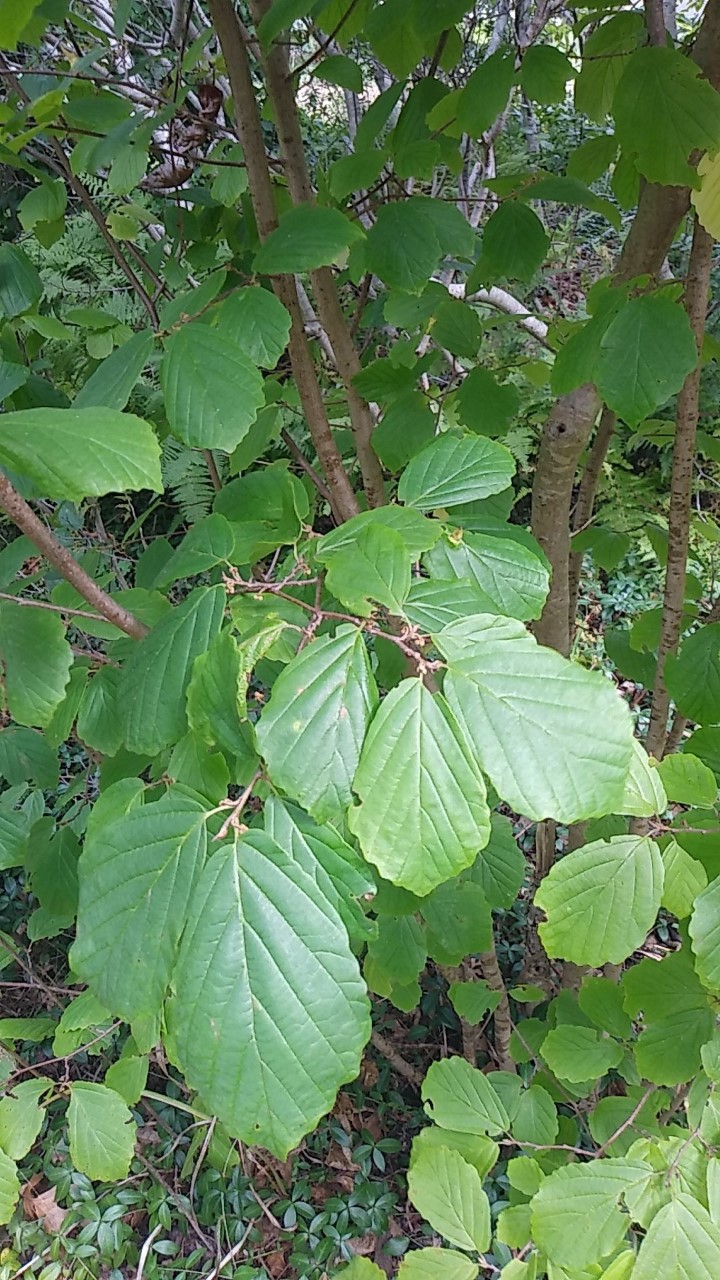 For an unfussy, tall and attractive native shrub to add to your garden, consider witch hazel. It does well in full sun or in dappled shade. It grows as tall as 15-20 feet but maintains a columnar or vase shape. Plant several for a leafy deciduous hedge, or one or two for vertical accents. The leaves, a refreshing green in summer, turn golden yellow in the fall.
For an unfussy, tall and attractive native shrub to add to your garden, consider witch hazel. It does well in full sun or in dappled shade. It grows as tall as 15-20 feet but maintains a columnar or vase shape. Plant several for a leafy deciduous hedge, or one or two for vertical accents. The leaves, a refreshing green in summer, turn golden yellow in the fall.

Another unusual feature is that the seedpods from the previous season appear with the new blooms and then split open, “exploding the 1-2 black seeds within for up to 30 feet,” according to the Missouri Botanical Garden database. The fruits and seeds appeal to birds and small mammals, too.
Witch hazels are available in Cape Cod nurseries, but because of those exploding seedpods, you may already have a volunteer witch hazel or two on your property. Lucky you!
December activity: As winter descends, it’s time to open (online) seed catalogs and dream of wildflowers. A wonderful source is the Wild Seed Project, based in Maine. Check out this page on its website for photos of over 60 wildflowers in bloom, plus a chart detailing their height, blooming season and preferred soil type and sun exposure. Because many wildflowers native to the northeast require cold conditions before their seeds will germinate, the holiday season is a good time to sow seeds in pots and set them outdoors with protective mesh. The seedlings can be transplanted to the garden In the late spring or early fall.